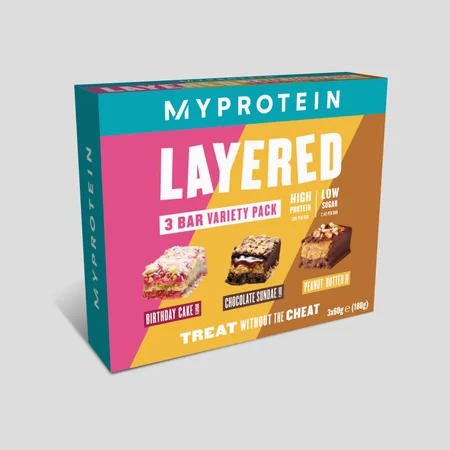- Van Dyke, N., & Drinkwater, E. J. (2014).Review article relationships between intuitive eating and health indicators: literature review.Public health nutrition, 17(8), 1757-1766.
- Catenacci, V. A., Pan, Z., Ostendorf, D., Brannon, S.,Gozansky, W. S., Mattson, M. P., … & Troy Donahoo, W. (2016).A randomized pilot study comparing zero‐calorie alternate‐day fasting to daily caloric restriction in adults with obesity. Obesity, 24(9), 1874-1883.
- Mattson, M. P., Longo, V. D., & Harvie, M. (2017).Impact of intermittent fasting on health and disease processes.Ageing research reviews, 39, 46-58.
- Elran-Barak, R.,Sztainer, M., Goldschmidt, A. B., Crow, S. J., Peterson, C. B., Hill, L. L., … & Le Grange, D. (2015). Dietary restriction behaviors and binge eating in anorexia nervosa, bulimia nervosa and binge eating disorder: Trans-diagnostic examination of the restraint model. Eating behaviors, 18, 192-196.
- Tinsley, G. M., & La Bounty, P. M. (2015).Effects of intermittent fasting on body composition and clinical health markers in humans.Nutrition reviews, 73(10), 661-674.
- Carlson, O., Martin, B.,Stote, K. S., Golden, E., Maudsley, S., Najjar, S. S., … & Mattson, M. P. (2007).Impact of reduced meal frequency without caloric restriction on glucose regulation in healthy, normal-weight middle-aged men and women. Metabolism, 56(12), 1729-1734.
- Fuse, Y., Hirao, A., Kuroda, H., Otsuka, M.,Tahara, Y., & Shibata, S. (2012).Differential roles of breakfast only (one meal per day) and a bigger breakfast with a small dinner (two meals per day) in mice fed a high-fat diet with regard to induced obesity and lipid metabolism. Journal of Circadian Rhythms, 10(1), 1-12.
Intuïtief vasten – de mening van een expert over een mogelijk schadelijke rage

Wat je doet, hoeft niet per se zo complex te zijn als het gaat om het beheersen van je gewicht, gezondheid en / of prestaties. Het is het 'waarom' je het doet en 'waar' dat vandaan komt, die uiteindelijk des te belangrijker zijn.
En toch heeft een nieuw 'rage' dieet een gecompliceerde en potentieel gevaarlijke benadering van eetgewoonten geïntroduceerd. Het heet intuïtief vasten - dit is wat je moet weten.

Wacht even, dit klinkt bekend ...
Je denkt misschien "wacht even, intuïtief vasten ... er gaat een belletje rinkelen" en je hebt gelijk.
Deze nieuwe benadering is in wezen een combinatie van twee eerdere benaderingen van een dieet. Het is echter een verontrustende herverpakking van ongeordend eetgedrag, vermomd in een mantel van wellnesscultuurterminologie.
De basis van intuïtief vasten komt voort uit eerdere benaderingen, namelijk; intuïtief eten en periodiek vasten.
Intuïtief eten
Intuïtief eten is een benadering van een dieet dat niet is gericht op gewichtsverlies, maar in plaats daarvan is gebaseerd op het herstellen van je relatie met voedsel en jezelf door actief te luisteren naar de signalen van je eigen lichaam rond honger en het elimineren van beperkende eetpraktijken. Het is echter zeker niet alles eten wat je maar ziet. De benadering van Evelyn Tribole en Elyse Rech draait om het respecteren van je gezondheid, je honger en je algehele gevoel van welzijn.
Intuïtief eten is een effectieve benadering geweest bij onderzoek naar gewichtsbeheersing en heeft ook een significante gunstige bijdrage geleverd aan het herstel en de bescherming van iemands relatie met voedsel.(1)
Intermittent fasting (IF)
IF is een vorm van tijdgebonden eten. Iedereen die deze benadering volgt, beperkt zich gewoonlijk tot het eten van binnen een bepaald tijdsbestek gedurende een dag, maar sommige gebruikers kunnen ook dag- tot meerdaags vasten overnemen.
Het vasten zelf is oorspronkelijk niet ontstaan uit de noodzaak om af te vallen. Een korte blik op de geschiedenis van het vasten laat zien dat een groot deel van de oorsprong ervan in religieuze en culturele thema's ligt.
Als benadering van eten wordt de moderne IF echter toegeschreven als een hulpmiddel voor gewichtsverlies en heeft zelfs een 'anti-verouderingseffect' te hebben, bovenop andere voordelen.(2,3)

Dus, wat is intuïtief vasten?
Als iemand die elke dag met mensen werkt met serieuze problemen rondom eten, is dit een onderwerp dat echt met zorg moet worden behandeld.
Intuïtief vasten is in wezen vasten als je daar behoefte aan hebt, maar is dit logisch?
Het beperken van de tijden dat je kunt eten, brengt je het risico om ongeordende eetgewoonten te ontwikkelen, terwijl intuïtief eten in wezen draait om jezelf bevrijden van de waargenomen regels van een dieet.
Hier is wat je kunt verwachten als je dit dieet probeert:
Veel vasten
Het dieet begint met een vastenvenster van 12 uur dat bedoeld is om het lichaam te 'resetten'. Dit wordt in week 2 gevolgd door een nog langer vastenvenster van maximaal 18 uur, wat bedoeld is om je metabolisme te helpen.
Het lijkt erop dat het belangrijkste doel van deze fase is om het individu te helpen ketose te bereiken, wat, nogmaals, waarschijnlijk zou vereisen dat ook andere zeer beperkende praktijken dienen te worden gevolgd (zoals een dieet met weinig tot geen koolhydraten).
Eens per dag eten
Tegen week 3 vraagt het dieet je om je eetpatroon te verminderen tot slechts één maaltijd per dag.
Blijkbaar is deze fase bedoeld om cellulair herstel te ondersteunen, je stamcellen te activeren en andere longevity pathways stimuleren. Dit gebeurt echter al bij een gezonde, evenwichtige levensstijl.
Het is belangrijk om te vermelden dat dit soort restrictieve praktijken kunnen bijdragen aan het ontwikkelen van langdurige eetstoornissen.(4) Het kan ook het risico op tekorten aan voedingsstoffen, opgeblazen gevoel en ongemak, verstoring van de spijsvertering verhogen en zelfs bijdragen aan verlies van spiermassa.(5)
Eén studie heeft zelfs aangetoond dat het eten van één maaltijd per dag leidt tot verslechterde biologische markers van metabole gezondheid, met een verslechterde bloedglucoseregulatie en een slechter cholesterolprofiel.(6)
Als het gaat om celvernieuwing, iss er niet veel menselijk onderzoek om de beweringen van de maker van het dieet op te baseren. Uit een onderzoek bij muizen bleek echter dat het eten van één maaltijd per dag in feite de oxidatieve schade (en dat is precies wat je hier zou moeten proberen te verminderen) in het vetweefsel en de levers van de muizen verhoogde.
De onderzoekers merkten ook een toename op van het lichaamsgewicht, insuline en circulerende triglyceriden (vet) in het bloed, wat niet echt indicatoren zijn voor een betere gezondheid. (7)
Wie is de bedenker?
De naam van de bedenker is Dr. Will Cole. Ten eerste is hij een dokter, maar niet precies in iets dat met voeding te maken heeft. Hij is een arts in chiropractie en natuurgeneeskunde en een beoefenaar van functionele geneeskunde.
Functionele geneeskunde wordt algemeen beschouwd als het 'zwarte schaap' van de gezondheidspraktijk en is vaak sterk afhankelijk van het vermoeden van wat er 'mis is met je' in plaats van ooit daadwerkelijk te ontdekken wat het probleem is; functionele geneeskunde kan dan ook gevaarlijk zijn.
Sommige praktijken op het gebied van functionele geneeskunde kunnen echter nuttig zijn, maar in dit geval is het redelijk om te zeggen dat het onderzoek de methoden van dit dieet niet precies ondersteunt.
Bericht om mee naar huis te nemen
Een goed dieet is iets dat geen voedselgroepen of eettijden beperkt, geleidelijke en duurzame resultaten geeft en gemakkelijk te volgen is.
Intuïtief vasten lijkt misschien een nieuw, opwindend dieet, maar het onderzoek suggereert dat het misschien niet alle gezondheidsvoordelen biedt die het in eerste instantie beweert te hebben. Als je van plan bent een nieuw dieet te volgen, moet je altijd overwegen om eerst een deskundige om advies en begeleiding te vragen.
LEES DIT OOK:














